Search Result
Results for "
plasticity
" in MedChemExpress (MCE) Product Catalog:
1
Isotope-Labeled Compounds
| Cat. No. |
Product Name |
Target |
Research Areas |
Chemical Structure |
-
- HY-120051
-
|
S44819; Egis-13529
|
GABA Receptor
|
Neurological Disease
|
|
Afizagabar (S44819) is a first-in-class, competitive, and selective antagonist at the GABA-binding site of the α5-GABAAR, with an IC50 of 585 nM for α5β2γ2 and a Ki of 66 nM for α5β3γ2. Afizagabar enhances hippocampal synaptic plasticity and exhibits pro-cognitive efficacy .
|
-
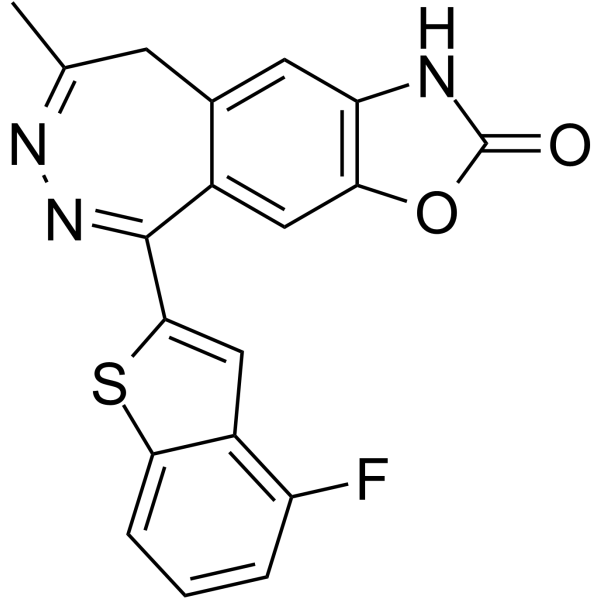
-
- HY-12646
-
|
|
Ras
Apoptosis
|
Cancer
|
|
Rhosin hydrochloride is a potent, specific RhoA subfamily Rho GTPases inhibitor. Rhosin hydrochloride specifically binds to RhoA to inhibit RhoA-GEF interaction with a Kd of ~ 0.4 uM, and does not interact with Cdc42 or Rac1, nor the GEF, LARG. Rhosin hydrochloride induces cell apoptosis . Rhosin hydrochloride promotes stress resiliency through enhancing D1-MSN plasticity and reducing hyperexcitability .
|
-
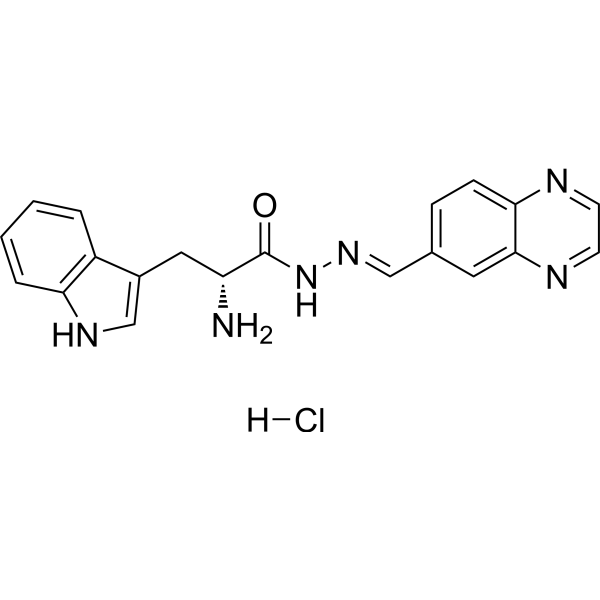
-
- HY-145761
-
|
|
iGluR
|
Neurological Disease
|
|
AMPA-IN-1 is a potent inhibitor of AMPA receptor. AMPA receptors are receptors that are widely expressed in the brain, and play a central role in the regulation of fast excitatory synaptic transmission and synaptic plasticity. AMPA-IN-1 has the potential for the research of various central diseases including epilepsy (extracted from patent WO2017082288A1, compound 14) .
|
-
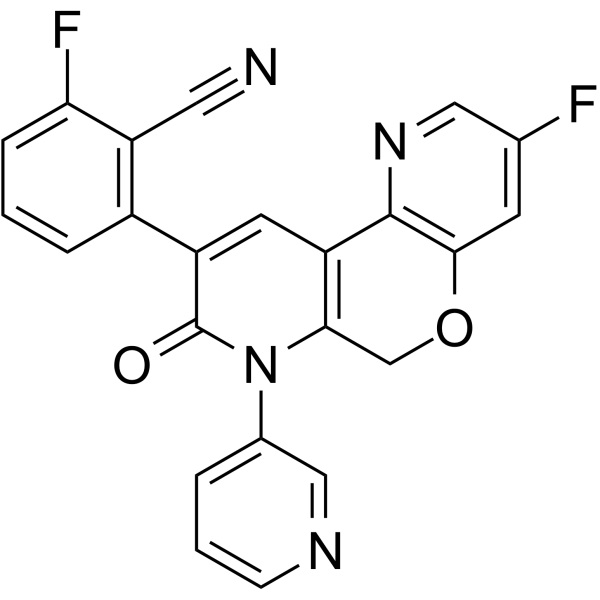
-
- HY-12646A
-
|
|
Ras
Apoptosis
|
Cancer
|
|
Rhosin is a potent, specific RhoA subfamily Rho GTPases inhibitor, which specifically binds to RhoA to inhibit RhoA-GEF interaction with a Kd of ~ 0.4 uM, and does not interact with Cdc42 or Rac1, nor the GEF, LARG. Rhosin induces cell apoptosis . Rhosin promotes stress resiliency through enhancing D1-MSN plasticity and reducing hyperexcitability .
|
-

-
- HY-P3340
-
|
|
iGluR
|
Neurological Disease
|
|
Leptin (116-130) is a bioactive leptin fragment. Leptin (116-130) promotes AMPA receptor trafficking to synapses and facilitate activity-dependent hippocampal synaptic plasticity. Leptin (116-130) prevents hippocampal synaptic disruption and neuronal cell death in models of amyloid toxicity. Leptin (116-130) has the potential for the research of Alzheimer's disease (AD) .
|
-

-
- HY-12319A
-
|
|
β-catenin
Wnt
|
Cardiovascular Disease
|
|
Cardiogenol C hydrochloride is a potent cell-permeable pyrimidine inducer which prompts the differentiation of ESCs into cardiomyocytes (EC50=100 nM) . Cardiogenol C hydrochloride also acts cardiomyogenic on already lineage-committed progenitor cell types with a limited degree of plasticity. Cardiogenol C hydrochloride is a useful cardiomyogenic agent and can be used as a tool to improve cardiac repair by cell transplantation therapy in animal models .
|
-

-
- HY-12319
-
|
|
β-catenin
Wnt
|
Cancer
|
|
Cardiogenol C is a potent cell-permeable pyrimidine inducer which prompts the differentiation of ESCs into cardiomyocytes (EC50=100 nM) . Cardiogenol C also acts cardiomyogenic on already lineage-committed progenitor cell types with a limited degree of plasticity. Cardiogenol C is a useful cardiomyogenic agent and can be used as a tool to improve cardiac repair by cell transplantation therapy in animal models .
|
-
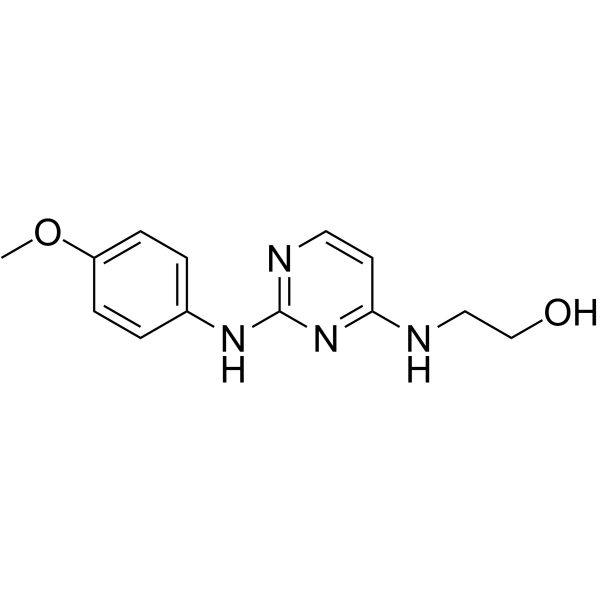
-
- HY-116377
-
|
|
Steroid Sulfatase
|
Neurological Disease
|
|
DU-14 is a potent steroid sulfatase inhibitor with an IC50 of 55.8 nM. DU-14 inhibits the MCF-7 cell proliferation (IC50 = 38.7 nM). DU-14 has neuroprotective effects against neurotoxic Aβ, suggesting that up-regulation of endogenous DHEAS by DU-14 could be beneficial to the alleviation of Aβ-induced impairments in spatial memory and synaptic plasticity .
|
-

-
- HY-142265
-
-
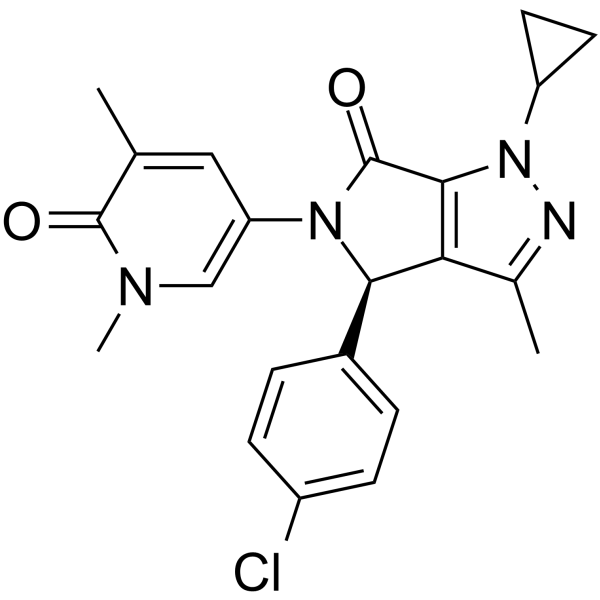
-
- HY-N0204
-
|
Anemoside A3
|
iGluR
|
Others
|
|
Pulchinenoside A is a natural triterpenoid saponin that enhances synaptic plasticity in the adult mouse hippocampus and facilitates spatial memory in adult mice.
|
-

-
- HY-125740
-
|
Malvidin-3-O-glucoside chloride; Oenin chloride
|
Others
|
Inflammation/Immunology
|
|
Malvidin-3-glucoside chloride (Malvidin-3-O-glucoside chloride), a major wine anthocyanin, is effective in promoting resilience against stress by modulating brain synaptic plasticity and peripheral inflammation .
|
-
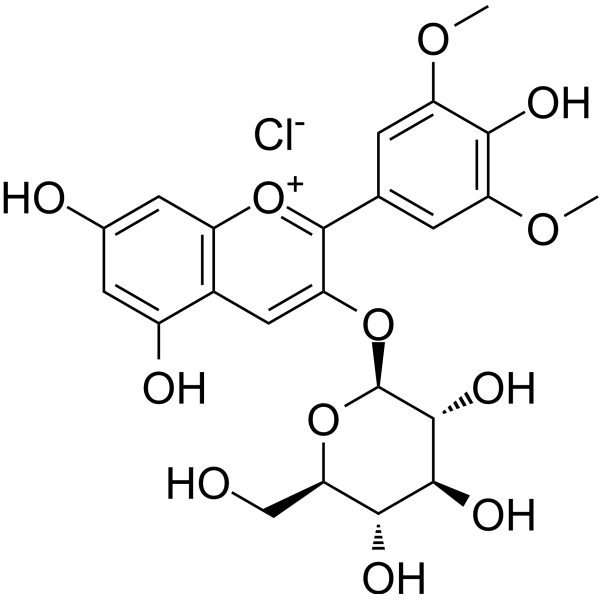
-
- HY-100771
-
|
|
Indoleamine 2,3-Dioxygenase (IDO)
|
Cardiovascular Disease
|
|
PCC0208009 is a potent IDO inhibitor with an IC50 value of 4.52 nM in HeLa cell. PCC0208009 alleviates neuropathic pain and comorbidities by regulating synaptic plasticity of anterior cingulate cortex (ACC) and amygdala .
|
-
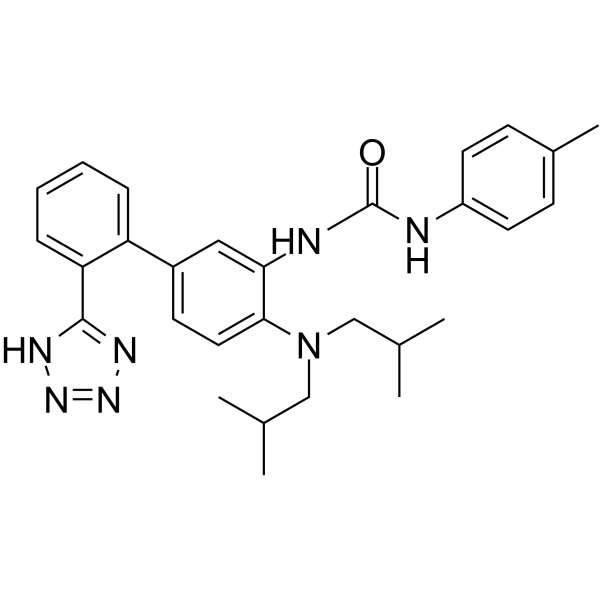
-
- HY-P2471
-
|
|
Calmodulin
|
Neurological Disease
|
|
Neurogranin (48-76), mouse is a peptide corresponding to residues 48-76 of Neurogranin. Neurogranin, a calmodulin-binding protein, is exclusively expressed in the post-synapse, and mediates NMDAR driven synaptic plasticity by regulating the calcium-calmodulin (Ca 2+-CaM) pathway .
|
-

-
- HY-109046
-
|
CX-1632; S-47445
|
iGluR
mTOR
|
Neurological Disease
|
|
Tulrampator (S-47445) is an orally active selective AMPA receptor modulator. Tulrampator possesses procognitive, enhancing synaptic plasticity, anti-depressant-anxiolytic-like, procognitive and potential neuroprotective properties. Tulrampator can be used for research of alzheimer’s disease and in major depressive disorder .
|
-
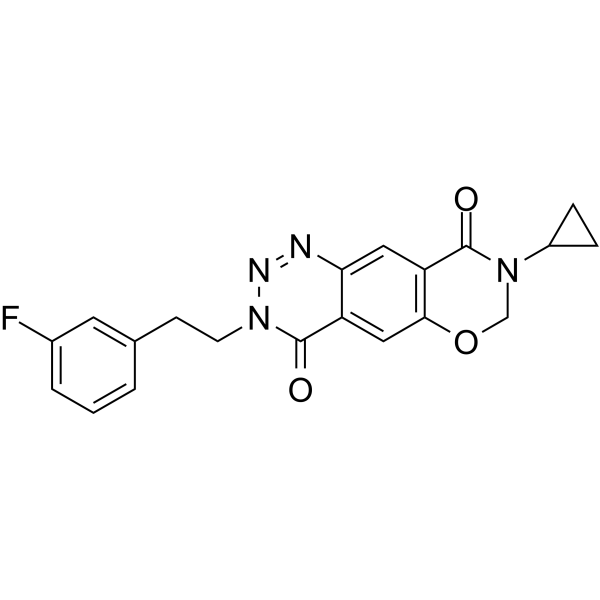
-
- HY-100808
-
|
(R)-Serine
|
|
|
|
D-Serine ((R)-Serine), an endogenous amino acid involved in glia-synapse interactions that has unique neurotransmitter characteristics, is a potent co-agonist at the NMDA glutamate receptor. D-Serinee has a cardinal modulatory role in major NMDAR-dependent processes including NMDAR-mediated neurotransmission, neurotoxicity, synaptic plasticity, and cell migration .
|
-

-
- HY-N10512
-
|
Gg4
|
Others
|
Neurological Disease
|
|
Gangliotetraose (Gg4) is a tetrasccharide, exhibits major components including GM1 and its sialylated derivatives. GM1 facilitates efflux of nuclear Ca 2+ and reduces the level of nuclear Ca 2+ that characterizes the differentiated neuron. GM1 affects neuronal plasticity and repair mechanisms, as well as neurotrophin release in the brain .
|
-

-
- HY-P1061
-
Colivelin
Maximum Cited Publications
34 Publications Verification
|
STAT
Amyloid-β
|
Neurological Disease
|
|
Colivelin is a brain penetrant neuroprotective peptide and a potent activator of STAT3, suppresses neuronal death by activating STAT3 in vitro . Colivelin exhibits long-term beneficial effects against neurotoxicity, Aβ deposition, neuronal apoptosis, and synaptic plasticity deficits in neurodegenerative disease . Colivelin has the potential for the treatment of alzheimer's disease and ischemic brain injury
|
-

-
- HY-P1061A
-
Colivelin TFA
Maximum Cited Publications
34 Publications Verification
|
STAT
Amyloid-β
Apoptosis
|
Neurological Disease
|
|
Colivelin TFA is a brain penetrant neuroprotective peptide and a potent activator of STAT3, suppresses neuronal death by activating STAT3 in vitro . Colivelin TFA exhibits long-term beneficial effects against neurotoxicity, Aβ deposition, neuronal apoptosis, and synaptic plasticity deficits in neurodegenerative disease . Colivelin TFA has the potential for the treatment of alzheimer's disease and ischemic brain injury .
|
-

-
- HY-155687
-
|
|
Phosphodiesterase (PDE)
|
Neurological Disease
|
|
PDE5-IN-10 (compound 4b) is a potent PDE5 inhibitor with an IC50 of 20 nM. PDE5-IN-10 improves in vitro microsomal stability (t1/2 = 44.6 min) as well as excellent efficacy in restoring long-term potentiation. PDE5-IN-10 can be used for Alzheimer’s disease (AD) research .
|
-
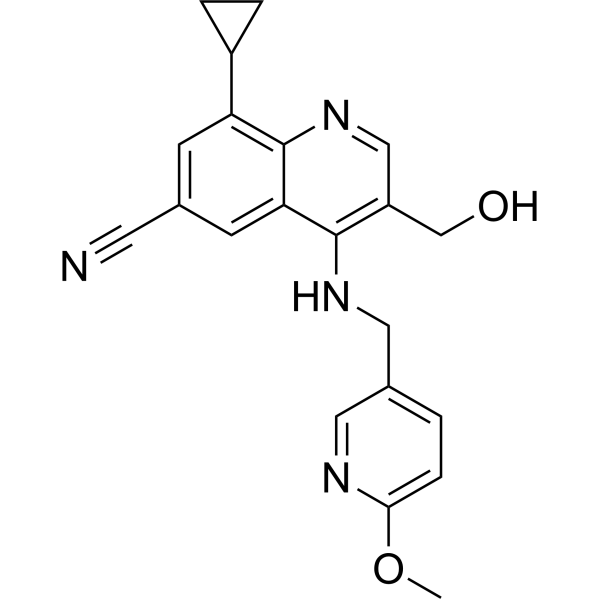
-
- HY-N0084
-
|
Betulinic aldehyde; Betunal
|
Bacterial
|
Infection
Cancer
|
|
Betulinaldehyde (Betunal) Has anti-cancer and anti-staphylococcus aureus activity. Betulinaldehyde Suppressible Akt, MAPK sum STAT3 Signal path, increase self-transfer, Suppression A549 Cellular vitality, increase and transfer. Betulinaldehyde suppresses PLCγ1/Ca 2+/MMP9 signal pathway, has a key effect on vascular plasticity, and is available for cardiovascular disease (CVD) research.
|
-

-
- HY-P2264
-
|
|
Ephrin Receptor
|
Inflammation/Immunology
|
|
KYL peptide, an antagonistic peptide, selectively targets EphA4 receptor (IC50:4.22 μM, Kd:1.3 μM). KYL peptide binds to the ligand-binding domain of EphA4, effectively alleviates Aβ-induced synaptic dysfunction and synaptic plasticity defects in AD mice. KYL peptide can promote nerve regeneration after injury and modulating immune responses .
|
-
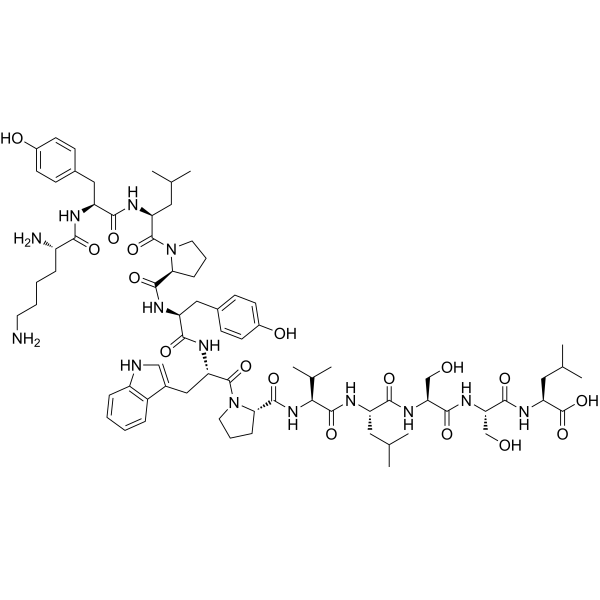
-
- HY-100808S
-
|
(R)-Serine-d3
|
Isotope-Labeled Compounds
|
Neurological Disease
|
|
D-Serine-d3 ((R)-Serine-d3) is a deuterium labeled D-Serine (HY-100808). D-Serine ((R)-Serine), an endogenous amino acid involved in glia-synapse interactions that has unique neurotransmitter characteristics, is a potent co-agonist at the NMDA glutamate receptor. D-Serinee has a cardinal modulatory role in major NMDAR-dependent processes including NMDAR-mediated neurotransmission, neurotoxicity, synaptic plasticity, and cell migration .
|
-

-
- HY-P3247
-
|
|
Insulin Receptor
|
Neurological Disease
Metabolic Disease
|
|
[D-Ala2]-GIP (human) is a GIP receptor agonist. [D-Ala2]-GIP (human) improves glucose tolerance. [D-Ala2]-GIP (human) shows neuroprotective activity in MPTP-induced Parkinson's disease model. [D-Ala2]-GIP (human) also improves cognitive function and hippocampal synaptic plasticity in obese diabetic rats. [D-Ala2]-GIP (human) can be used for research of type 2 diabetes, Parkinson's disease, etc
|
-
![[D-Ala2]-GIP (human)](//file.medchemexpress.com/product_pic/hy-p3247.gif)
| Cat. No. |
Product Name |
Target |
Research Area |
-
- HY-P2262
-
|
TDE
|
Peptides
|
Neurological Disease
|
|
TAT-DEF-Elk-1 (TDE) is a cell-penetrating peptide inhibitor of Elk-1, mimics and specifically interferes with the DEF domain of Elk-1. TAT-DEF-Elk-1 blocks Elk-1 phosphorylation and prevents Elk-1 nuclear translocation without interfering with ERK nor MSK1 activation. TAT-DEF-Elk-1 is a useful tool to analyze the role of Elk-1 in this process during the development of neuronal plasticity .
|
-
- HY-P1061
-
Colivelin
Maximum Cited Publications
34 Publications Verification
|
STAT
Amyloid-β
|
Neurological Disease
|
|
Colivelin is a brain penetrant neuroprotective peptide and a potent activator of STAT3, suppresses neuronal death by activating STAT3 in vitro . Colivelin exhibits long-term beneficial effects against neurotoxicity, Aβ deposition, neuronal apoptosis, and synaptic plasticity deficits in neurodegenerative disease . Colivelin has the potential for the treatment of alzheimer's disease and ischemic brain injury
|
-
- HY-P1061A
-
Colivelin TFA
Maximum Cited Publications
34 Publications Verification
|
STAT
Amyloid-β
Apoptosis
|
Neurological Disease
|
|
Colivelin TFA is a brain penetrant neuroprotective peptide and a potent activator of STAT3, suppresses neuronal death by activating STAT3 in vitro . Colivelin TFA exhibits long-term beneficial effects against neurotoxicity, Aβ deposition, neuronal apoptosis, and synaptic plasticity deficits in neurodegenerative disease . Colivelin TFA has the potential for the treatment of alzheimer's disease and ischemic brain injury .
|
-
- HY-P3340
-
|
|
iGluR
|
Neurological Disease
|
|
Leptin (116-130) is a bioactive leptin fragment. Leptin (116-130) promotes AMPA receptor trafficking to synapses and facilitate activity-dependent hippocampal synaptic plasticity. Leptin (116-130) prevents hippocampal synaptic disruption and neuronal cell death in models of amyloid toxicity. Leptin (116-130) has the potential for the research of Alzheimer's disease (AD) .
|
-
- HY-P2471
-
|
|
Calmodulin
|
Neurological Disease
|
|
Neurogranin (48-76), mouse is a peptide corresponding to residues 48-76 of Neurogranin. Neurogranin, a calmodulin-binding protein, is exclusively expressed in the post-synapse, and mediates NMDAR driven synaptic plasticity by regulating the calcium-calmodulin (Ca 2+-CaM) pathway .
|
-
- HY-P5291
-
|
Caerulein precursor fragment
|
Peptides
|
Metabolic Disease
|
|
CPF-7 (Caerulein precursor fragment) is an insulin-releasing peptide that stimulates the release of insulin. CPF-7 can induce epithelial-mesenchymal transition by upregulating Snai1 expression in PANC-1 ductal cells. CPF-7 also induces exocrine plasticity by upregulating Ngn3 expression. CPF-7 can be used in the research of type 2 diabetes .
|
-
- HY-P2264
-
|
|
Ephrin Receptor
|
Inflammation/Immunology
|
|
KYL peptide, an antagonistic peptide, selectively targets EphA4 receptor (IC50:4.22 μM, Kd:1.3 μM). KYL peptide binds to the ligand-binding domain of EphA4, effectively alleviates Aβ-induced synaptic dysfunction and synaptic plasticity defects in AD mice. KYL peptide can promote nerve regeneration after injury and modulating immune responses .
|
-
- HY-P2262A
-
|
TDE TFA
|
Peptides
|
Neurological Disease
|
|
TAT-DEF-Elk-1 TFA (TDE TFA) is a cell-penetrating peptide inhibitor of Elk-1, mimics and specifically interferes with the DEF domain of Elk-1. TAT-DEF-Elk-1 TFA blocks Elk-1 phosphorylation and prevents Elk-1 nuclear translocation without interfering with ERK nor MSK1 activation. TAT-DEF-Elk-1 TFA is a useful tool to analyze the role of Elk-1 in this process during the development of neuronal plasticity .
|
-
- HY-P3247
-
|
|
Insulin Receptor
|
Neurological Disease
Metabolic Disease
|
|
[D-Ala2]-GIP (human) is a GIP receptor agonist. [D-Ala2]-GIP (human) improves glucose tolerance. [D-Ala2]-GIP (human) shows neuroprotective activity in MPTP-induced Parkinson's disease model. [D-Ala2]-GIP (human) also improves cognitive function and hippocampal synaptic plasticity in obese diabetic rats. [D-Ala2]-GIP (human) can be used for research of type 2 diabetes, Parkinson's disease, etc
|
| Cat. No. |
Product Name |
Category |
Target |
Chemical Structure |
| Cat. No. |
Product Name |
Chemical Structure |
-
- HY-100808S
-
|
|
|
D-Serine-d3 ((R)-Serine-d3) is a deuterium labeled D-Serine (HY-100808). D-Serine ((R)-Serine), an endogenous amino acid involved in glia-synapse interactions that has unique neurotransmitter characteristics, is a potent co-agonist at the NMDA glutamate receptor. D-Serinee has a cardinal modulatory role in major NMDAR-dependent processes including NMDAR-mediated neurotransmission, neurotoxicity, synaptic plasticity, and cell migration .
|
-

Your information is safe with us. * Required Fields.
Inquiry Information
- Product Name:
- Cat. No.:
- Quantity:
- MCE Japan Authorized Agent:




























![[D-Ala2]-GIP (human)](http://file.medchemexpress.com/product_pic/hy-p3247.gif)


